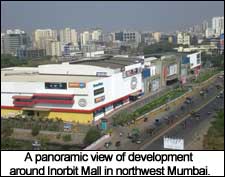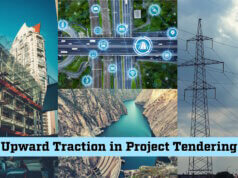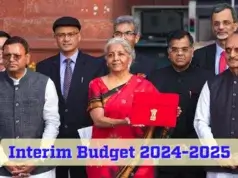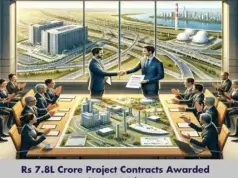 The real estate market is one of the fastest growing sectors in India. It successfully attracts domestic as well as foreign investments. Many factors have contributed to this growth, mainly large middle class base, rising income and rapid urbanisation, says Kunal Premnarayen, Group CEO, ICS Group adding retail is the most profitable investment in real estate, if the correct principles are implemented.
The real estate market is one of the fastest growing sectors in India. It successfully attracts domestic as well as foreign investments. Many factors have contributed to this growth, mainly large middle class base, rising income and rapid urbanisation, says Kunal Premnarayen, Group CEO, ICS Group adding retail is the most profitable investment in real estate, if the correct principles are implemented.
Development of residential, commercial and retail in the same vicinity is advantageous for the buyers. It helps them attain a better lifestyle as their travel time between work place and home is reduced. It is definitely a boon in a country where travel time is calculated in hours spent on road rather than kilometres. Having entertainment and retail conveniences close by is always preferred.
Some properties are also sound investment vehicles, as a successful mall in the same neighbourhood makes the location more premium. There are usually other components such as health facilities and hospitals that also develop nearby and give the location more prominence. A popular mall increases the traffic and crowd in a certain area. The particular area becomes well known and highly visited and hence the demand for residential in and around it goes up.
Consider the live example of a well-known suburban mall in Mumbai – Inorbit. A decade back, when the shopping centre had opened, it was surrounded by waste land. The area around the mall had hardly developed and the property cost was around Rs.2,800 per sq. ft. However, soon Inorbit gained recognition and became a weekend destination. The development of the hyper market, Hypercity, next to it added to the area’s popularity. The mall soon became a commercial hub and premium residential complexes developed nearby. The property prices saw a meteoric rise of approximately 400 per cent while, presently, the cost per sq. ft in this area is approximately Rs.14,000 to Rs.15,000.
Another fitting example would be of Gurgaon. Located about 15 miles south of the national capital, the city barely existed two decades back. With the advent of malls like, DLF City Centre, Amby Mall, Metropolitan Mall etc., Gurgaon’s fame grew. Within a few years residential as well as commercial developments were mushrooming in the area. Today, Gurgaon has emerged a preferred location for buyers looking for residential properties. The cost per square feet is around Rs.12,000 simultaneously there is immense demand for new developments.
Mixed-use development
The above examples clearly show how mixed use developments have gained significance. Small contained townships that incorporate residential, retail, hospitality and commercial or office spaces in the same area is the new emerging concept. Mixed-use developments are built over a large area and in phases. They are coming up in metros as well as tier-II & III cities. This trend has proved to be profitable for developers.
A developer captures all the segments – residential, retail and commercial — in the same area. His risk is diversified and helps him get the maximum returns on his investment. The close proximity of residential and commercial helps develop the retail asset which manages to become a source of annuity later. With FDI in retail opening, this concept may get a further boost. More and more developers are considering mixed use projects instead of standalone developments.
 International scenario
International scenario
Investment strategies are getting focused towards creating large mixed use developments with retail as the catalyst. The other development components such as residential, commercial etc. tend to benefit from the retail mall as people desire to live nearby to major retail and entertainment destinations. Companies, too, are keen to have their offices within these environments and hotels serving both business and leisure travellers wish to be located in the vicinity.
The Gateway Theatre of Shopping at Durban, South Africa, developed by Old Mutual Property, our partners for India, is one such example. This mall has been the driving force for many new developments in the area. Originally a sugar cane plantation site, the launch of Gateway in 2001 has led to the development of a new town centre and both commercial and residential developments within the region. In conclusion, the subsectors of real estate – residential, commercial, retail and hospitality — are complementary and drive growth for each other.
As real estate markets around the world continue to rebound from the global financial crisis, in India the sector has grown to become the second largest employer after agriculture. Future projections show that the sector will continue to grow at a rapid pace. With favourable economic fundamentals and demographic factors, this seems true. As a critical sector and a major contributor of country’s GDP, this is good news.











